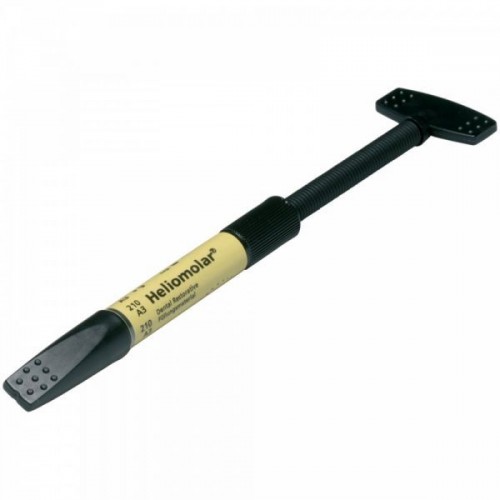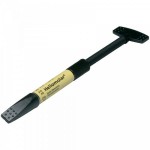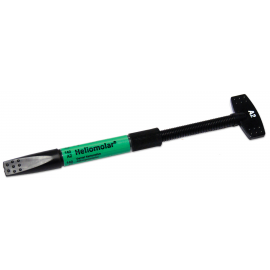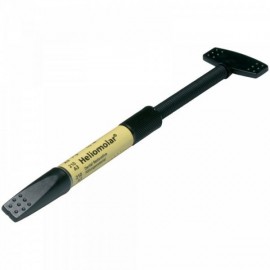Ivoclar Heliomolar Refills 3gm
OverView
Ivoclar Heliomolar Refills 3gmAvailable Options
For fast ORDERING experience Visit our new site  www.medicabasket.com
www.medicabasket.com
NOTE: Due to volatility in dental market, Price and stock shown here are tentative and needed approval of supplier, Although we update frequently. Our Team will your order soon.
COD is not available now.
Call/ WhatsApp on +91-9313922999 / +91-9810283698

- Information
-
Dental Brands
- 3M Espe
- 3M Unitek
- A.J. Wilcock
- Agfa
- American Orthodontics
- Ammdent
- Anabond
- Angelus
- API Ashoosons
- API Instruments
- Apple Dental
- Being Foshan
- Bestodent
- Bien Air
- BIOLASE
- Blossom
- Bombay Dental
- Capri
- Captain Ortho
- Cerkamed
- Colgate
- Coltene Whaledent
- Confident
- D-Tech
- Danville
- Denext
- Dental Books
- Dental-Avenue
- Dentaurum
- Dentium
- Dentsply
- Desires ortho
- Detax Dental
- Diadent
- Dispodent
- DMG
- DPI
- Durr Dental
- Eighteeth
- Eltee Instruments
- Endoking
- Euronda S.P.A
- Fgm
- Fuji film
- G&H
- GC
- Gen-XT Implant
- Gendex
- Genoray
- Green Guava
- Hahnenkratt
- Heraeus Kulzer
- Horico
- Hu-Friedy
- ICPA
- Ids Denmed
- IMDSL Laser
- Itena
- Ivoclar Vivadent
- J Morita
- Jota
- Kalabhai
- Kavo
- Kerr
- Kodak
- Labomed
- Leone
- Libral
- Life Steriware
- Maarc
- Mani
- Marathon
- MDC
- Medicept
- Meta
- Modern ortho
- Moriz
- Navadha
- Neelkanth
- NeoEndo
- Novabone
- NSK
- Oracura
- Orateek
- Orchestrate O3D Aligner
- Ormco
- Oro
- Ortho Classic
- Ortho Organizers
- Ortho Technology
- Orthocare
- Orthosource
- Premier
- Prevest
- Prima Dental
- Pulpdent
- Pyrax Dental
- Rabbit Force Ortho
- Rejove 32Watts Aligners
- RS Dental Chair
- Ruby Dental
- Ruthinium
- Saeshin
- Samit
- Scheu
- SDI
- Septodont
- Shivam Dental
- Shofu
- SK Surgicals
- Skydent
- SS-White
- Strong
- Sun Medical
- Sure Endo
- Surgiwear
- Tokuyama
- TP Orthodontics
- Unicorn
- Unident
- Unique
- Vatech
- VDW
- VeeCare
- Vita
- Voco
- VRN
- W&H
- Waldent Equipment
- Waldent Instruments
- Waldent Material
- Woodpecker
- Zhermack
- Zoom
- Triodent
- Other brands
- Offers & Combos
- Contact Us
-
Product Category
- Composites & Restoratives
- Dental Education
-
Dental Equipment
- Air-Motor
- Apex Locators
- Autoclaves & Sterilizers
- Dental Air Compressor
- Dental Chair
- Dental Chair Accessories
- Dental Handpiece
- Dental Laser
- Dental Loupes
- Dental Surgery
- Endo Motor
- Handpiece Cartridge
- Implant Motors
- Intraoral Camera
- LED Light Cure
- Micromotors
- Microscope
- Radiology
- Suction Units
- Ultrasonic Scalers
- UV Chamber
- Dental Lab
- Endodontics
- Implantology
- Instruments And Burs
- New Clinic Setup Kits
- Oral Surgery
- Paedodontics
- Periodontics
- Prosthodontics
- Sterilization & COVID-19 Supplies
- General Dentistry
-
Ortho Store
- Arch Wires & Springs
- Bonding Adhesives
- Elastomerics
- Expansion Screws
- Headgear accessories
- Laboratory Products
- Mini TAD Screw
- Molar Bands and Tubes
- Ortho Attachments
- Photographic Accessories
- Weldable Accessories
- Braces or Brackets
- Clear Aligners
- Orthodontic Appliances
- Orthodontic IPR solutions
- Orthodontic Instruments
- Find Your Dentist
- Medica Basket
Your shopping cart is empty!
Ivoclar Heliomolar Refills 3gm
FEATURES:
- Pleasing esthetics
- Good adjustment of the shade (chameleon effect)
- Good shade stability
- High radiopacity
- Low wear
- Continuous fluoride release
Description
The universal composite Heliomolar is suitable for use in both anterior and posterior teeth. This clinically tried-and-tested product has been used more than millions of times over since it was introduced.
Indication –
- Anterior restorations (Classes III, IV)
- Class V restorations (cervical caries, root erosion, wedge-shaped defects)
- Restorations in the posterior region (Classes I and II)
- Reconstruction of traumatically damaged anterior teeth
- Splinting of mobile anterior teeth
- Shape and shade corrections to improve aesthetics
- Veneering of discoloured anterior teeth
- Extended fissure sealing
- Repair of facets
- Extraoral fabrication of inlays/onlays
Key Specifications
Storage temperature 2–28 °C (36–82 °F)
Composition
The monomer matrix is composed of Bis-GMA, urethane dimethacrylate and decandiol dimethacrylate (22 wt%). The fillers are composed of highly dispersed silicon dioxide, ytterbium tri-fluoride and copolymer (77.8 wt%). Additional contents are catalysts, stabilizers, and pigments (0.2 wt%). The total content of inorganic fillers is 46,0 vol% or 66.7 wt%. The particle size ranges from 0.04 to 0.2 µm.
Technical Data
Standard composition (in wt%) Bis-GMA, Urethane dimethacrylate 19 Decandiol dimethacrylate 3 Triethylene glycol dimethacrylate - - Highly dispersed silicon dioxide, Prepolymer, Ytterbium trifluoride 77 Stabilizers, catalysts and pigments < 1 Packaging
- 1 x 3gm Refill
Direction to Use
- Step 1: Apply Heliomolar in layers of max. 2 mm thickness and adapt it with a suitable instrument (e.g. OptraSculpt).
- Step 2: Sufficient exposure to the curing light prevents incomplete polymerization. For the recommendations regarding exposure time and light intensity.
- Step 3: When using a metal matrix, additionally polymerize the composite material from the vestibular or lingual/palatal aspect after removing the matrix, if no Bluephase polymerization light is used or the light probe cannot be ideally positioned, e.g. distant to composite or diverging scattering angle.






